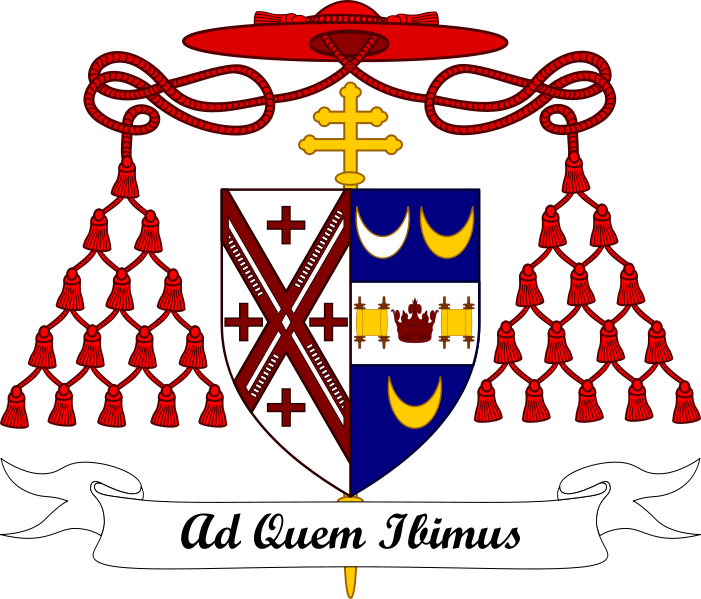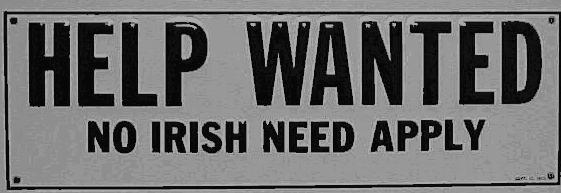“Why do the Irish so enjoy parades? True, everybody loves a parade, and we’re blessed to have an abundance of them here in New York City, but nothing seems to rival the St. Patrick’s Day Parade. This year alone I was invited to eleven of them just in the archdiocese alone, and another dozen from around the country!
No doubt about it; while everybody loves a parade, nobody else comes close to the Irish in the diaspora – – people of Irish background whose ancestors emigrated from Ireland to other countries, especially here – – in marching on or near March 17.
I ask once again, why? Well, I’ve got a theory, which I’m happy to say is shared by observers of Irish ways far more erudite that I am.
The theory is this: for centuries, the Irish could never be public about their culture, faith, heritage, or identity in their homeland. We know why this was so from our history classes: because their British landlords and masters would not allow them to be expressive about who they were! The Irish were in subjugation; they were oppressed.
This was especially true when it came to any demonstration of their Catholic faith. A Catholic in Ireland – – over 90% of the people – – could not own land, inherit land, or vote. The Church was harassed and persecuted, with Masses celebrated clandestinely on rocks in the forest, with sentries posted to keep an eye out for the soldiers. Education in the faith could only be done in hiding.
A Catholic in Ireland could gain all the rights of British citizenship if he renounced his Catholic faith. In times of famine, one could get a bowl of soup if one turned Protestant, or was willing to eat a soup with meat in it on a Friday. Rare was the Irishman who did. Many were those who chose starvation instead, millions; genocide by any other name. They were reduced to penury, with the constant threat of eviction and hunger, and forbidden to show any signs of their faith.
My famous predecessor, Archbishop John Hughes, wrote, “For the first six days of my life, that week after my birth, I had all the rights of a British citizen. All that ended on the day of my baptism as a Catholic.”
(Editor: I remember singing this song frequently when younger, not so much now. Shame. I think the Church is trying to be more politically correct in its liturgy? Shame.)
‘Faith of our fathers, living still,
In spite of dungeon, fire, and sword;
Oh, how our hearts beat high with joy
Whene’er we hear that glorious Word!
Faith of our fathers, holy faith!
We will be true to thee till death.
Our fathers, chained in prisons dark,
Were still in heart and conscience free;
How sweet would be their children’s fate,
If they, like them, could die for thee!
Faith of our fathers, holy faith!
We will be true to thee till death.
Faith of our fathers, we will strive
To win all nations unto thee;
And through the truth that comes from God,
We all shall then be truly free.
Faith of our fathers, holy faith!
We will be true to thee till death.
Faith of our fathers, we will love
Both friend and foe in all our strife;
And preach thee, too, as love knows how
By kindly words and virtuous life.’
When “dungeon, fire, and sword (see above),” joined with oppression and grinding poverty, led hundreds of thousands of Irish to leave their beloved island for places like America, they were still poor, they were still looked down upon, they were still treated like serfs, they were still harassed for their religion, but they sensed freedom, and longed to give public witness to their pride in their faith, culture, heritage, and identity.
What better way to do so than in the St. Patrick’s Day parades!
No surprise at all that the by-laws of the New York City St. Patrick’s Day Parade would state the two purposes of the Parade Committee to be, (a) “to arrange, organize and conduct . . . a parade in honor of St. Patrick, the Patron Saint of Ireland . . .,” and . . . (b) to educate and perpetuate the principles of the Roman Catholic Church, and the culture and tradition of the Irish and Irish-American people.”
The website of the St. Patrick’s Day Parade notes that this parade is “the oldest and largest St. Patrick’s Day Parade in the world.” More important, it emphasizes that the parade was established “in honor of St. Patrick, the Patron Saint of Ireland and of the Archdiocese of New York.”
It is important, especially given the strong secular currents in our society today, that we not forget why this parade exists. It is not just the Irish Parade: We march to honor St. Patrick. That is why so many cringe at and resist pleas to weaken the Catholic origins of the parade.
Those of us who are Irish-Catholic are proud of our ethnic and religious heritage, just as others who celebrate their ethnic and religious heritage are proud of theirs. To be sure, there are times when we focus exclusively on our ethnic moorings (aka, Professionally Irish) :); similarly, there are times when we honor only our religious roots. But we cannot observe the St. Patrick’s Day Parade without celebrating both our ethnic and religious heritage.
While everyone is invited to march in the parade and all are welcome, no one is permitted to use it for causes that are extrinsic to its origins.
While the archbishops of New York have never been “in charge” of the parade – – and never wanted to be! – – we have always enjoyed an enthusiastically friendly association with it. The Mass in the Cathedral that starts the grand day is jammed, and characterized by reverence and joy. And the reviewing stand on the front steps of the Cathedral has always been the best seat in the house for the festivities!
I thank those who love and lead the parade for assuring us all that the original intent of the parade, which has flourished for over two-and-a-half centuries – – to celebrate the faith, heritage, culture, and tradition of Ireland – – is preserved.
It would be particularly somber if the forces of secularism were able to do what centuries of oppressive rule were unable to do: erase the faith from Irish identity.
See you on Fifth Avenue!”
Love & Slainte’!
Matthew


